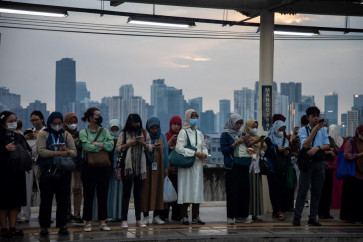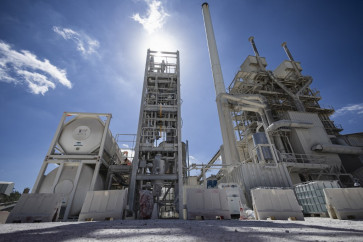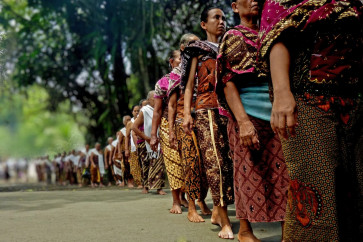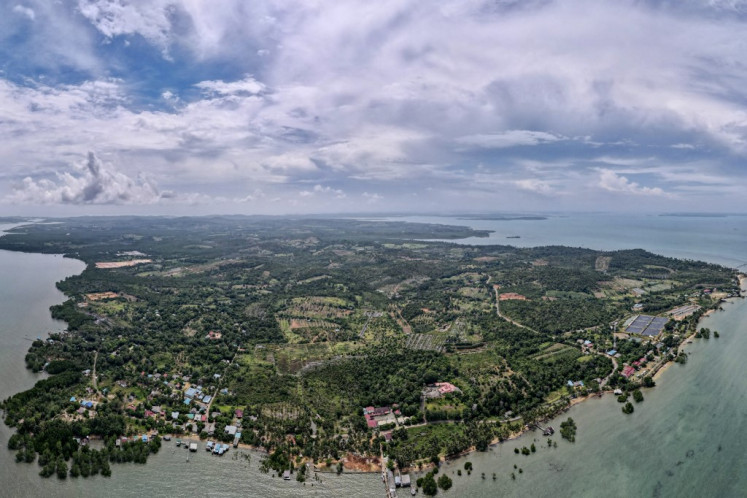Popular Reads
Top Results
Can't find what you're looking for?
View all search resultsPopular Reads
Top Results
Can't find what you're looking for?
View all search resultsViewpoint: Indonesia-Taiwan ties: When gray is good
What’s your favorite color? Mine’s red
Change text size
Gift Premium Articles
to Anyone
W
hat’s your favorite color? Mine’s red. According to Rankopedia it’s the number two fave in the world, after blue.
In Taipei recently, as a participant in the third Taiwan-Indonesia Dialogue, held from Sept. 19-20, I noticed that Taiwan’s flag is red with a blue canton bearing a white sun with 12 triangular rays. They call it Blue Sky, White Sun and Wholly Red Earth. Dramatic name!
Indonesia’s flag has a much less dramatic appellation. It’s called Sang Saka Merah Putih — The Red-and-White Flag — because it has those two colors (duh!), symbolizing courage and purity.
But although Taiwan and Indonesia share red in their flags, their relationship is more like … gray. I don’t think many people choose gray as their favorite color, but it seems to work well for Indonesia and Taiwan.
Why gray? Because the relationship is fraught with ambiguities and (political) contradictions. Like 172 other UN member states, Indonesia sticks to the One-China Policy, officially recognizing only the People’s Republic of China (PRC).
This was true even from 1966 to 1990, when the two countries had no diplomatic relations. Ironically, although we don’t officially recognize Taiwan, aka Republic of China (ROC), we’ve enjoyed close relations with Taiwan since the late 1960s.
This was initially due to a shared anti-communist stance and fear of China, but after Indonesia and Taiwan went through democratic transitions in the 1990s they found they now have a democratizing agenda in common. In fact, both were praised as models of democracy in the Freedom House’s recent “Freedom in the World 2012 Report”.
As Ibrahim Almuttaqin pointed out during the dialogue, it’s ironic that Indonesia has full diplomatic relations with China, despite it having a one-party system, and lesser diplomatic relations with Taiwan, despite it being democratic. In fact, Indonesia has become pretty cozy with China since the two countries normalized relationships in 1990 and even signed a Strategic Partnership Agreement in 2005.
So, is Indonesia torn between two lovers? Since China is both so much bigger and Indonesia’s second-most important economic partner after Japan, does Indonesia have to go backstreet with Taiwan?
“No way”, said Dewi Fortuna Anwar, chair for the Institute for Democracy and Human Rights at The Habibie Center, in her excellent keynote speech. The liaison has always been open and upfront. Despite geopolitical constraints, she said, “the opportunities for widening and deepening bilateral relations between Indonesia and Taiwan have grown”.
While Indonesia doesn’t officially recognize Taiwan, it has a representative office in Taipei, the Indonesian Economic and Trade Office (KDEI), and Taiwan has its Taipei Economic and Trade Office (TETO) in Jakarta.
Andrew Hsia, the representative of TETO in Jakarta, often expresses frustration at his inability to connect with high-ranking government officials in Jakarta.
But when you look at the statistics on Indonesia-Taiwan relations, I’m not so sure he’s got much to complain about. You’d be astonished how much is achieved at this lower level of diplomatic representation — not just in trade and investment, but also science and technology, intelligence, education and in the socio-cultural sphere.
According to the BKPM (the Investment Coordinating Board), 1,475 Taiwanese investors had invested a total of US$14.68 billion in Indonesia up to June. Taiwan is now Indonesia’s No. 9 foreign direct investment source, creating about 1 million job opportunities in Indonesia, while managerial and technical personnel from Taiwan number around 8,000. And last year, 212,000 Taiwanese tourists visited Indonesia. With 88 flights per week between the two countries, travel has hardly been hampered by geopolitical friction!
Then of course there are the 185,000 Indonesian migrant workers in Taiwan, now ranking No. 1 among Southeast Asian migrant workers in that country (42 percent), and continually increasing. No wonder an MOU on the Placement of Manpower was signed in January 2011.
So will the flourishing of Indonesia-Taiwan relations continue in this profitable gray area? For now maybe, but in the longer term, who knows?
China-Taiwan relations are warming and there has always been interdependence between the two. In June 2010, the PRC and the ROC signed the Economic Cooperation Framework Agreement (ECFA). This heralded the biggest change in cross-strait relations in 60 years. Some see it as a covert push for unification but the fact remains that trade between the two countries is fast and furious.
China is Taiwan’s No. 1 trading partner with a trade value in 2011 of over $100 billion (Indonesia’s trade with China in 2011 was $49 billion). Taiwan is also a major investor in China, with investments standing at $100 billion or perhaps higher. Half of China’s top 20 exporting companies are Taiwan-owned. There are close to a million Taiwanese working in China at these companies and others.
Wow!
I was surprised, however, to read that Chinese students have even been allowed to study in Taiwan since autumn 2011. “Paul”, one of the 2,000 visiting students, spent much of his spare time in bookstores and libraries poring over books – not publications in his area of study, but ones banned in China.
Is this the way to go, to let Taiwanese democracy influence young minds? Many of the students are the cream of the crop and could become government officials or civil servants in China. Things could become very interesting when they return.
Perhaps the time will come when Taiwan will be recognized by all 193 UN member states, including Indonesia, and not just the current 22 plus the Vatican? In the meantime, our two countries seem to be enjoying their own version of 50 shades of gray!
The writer (www.juliasuryakusuma.com) is the author of State Ibuism.










